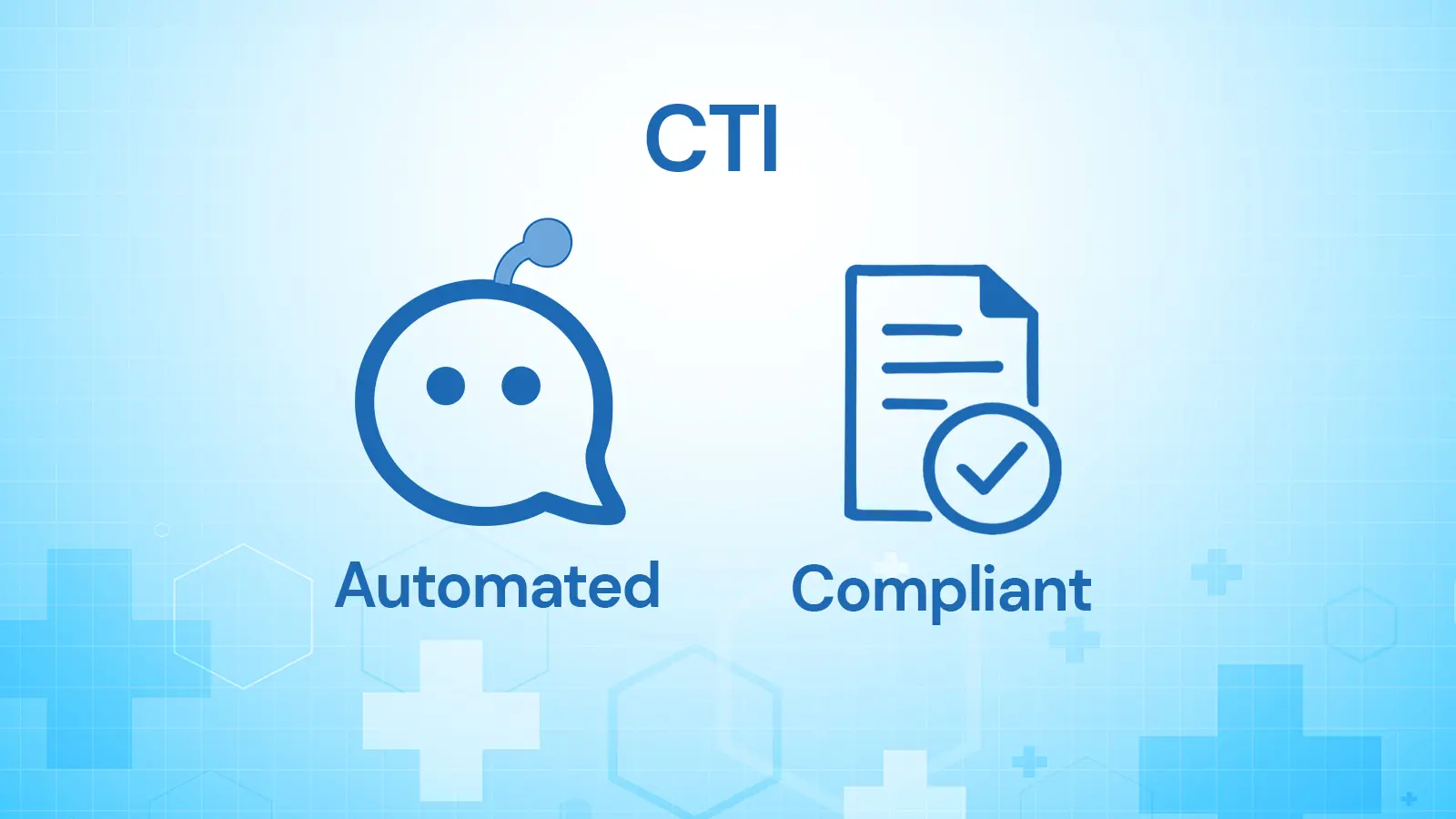
The Certificate of Terminal Illness (CTI) serves as the regulatory gatekeeper for hospice benefits. Delays, missing physician narratives, or late recertifications stall patient care, frustrate families, and trigger claim denials. Manual faxes, phone chases, and fragmented tracking increase physician burden while leaving organizations vulnerable to audit risk.
QliqSOFT standardizes CTI capture, physician signatures, and recertification windows—ensuring every CTI is unique, on time, and audit-ready.
CTI is the gateway to hospice. On time, every time—that’s the difference between seamless care and stalled admission.

The Certification Countdown: A Compliance Story
Dr. Smith had just admitted a new patient under hospice care. From the moment of the election, the clock began ticking. CMS required his certification within two calendar days—a hard deadline that left no room for delay.
Unlike other paperwork, this wasn’t something he could delegate or template. CMS requires a unique, physician-authored narrative, written in the physician's own words, explaining why the patient was eligible. It was a burden on already limited time, but a non-negotiable requirement.
Sometimes, the process begins with a verbal certification, especially if the patient is admitted on a weekend or after hours. But even then, the rules were clear: the verbal attestation had to be documented within two days, and promptly followed by a written certification. A single missed step could trigger red flags.
The real challenge came with recertifications at 60 and 90 days. Each one required careful attention, sometimes even a face-to-face encounter. If Dr. Smith missed the window, payment would be denied outright, with no exceptions.
Behind it all loomed the shadow of CMS audits. Inspectors looked for late timestamps, missing signatures, or incomplete narratives. Each oversight wasn’t just a clerical error—it was a compliance risk that could expose the practice to denials, penalties, and financial loss.
For Dr. Smith, compliance wasn’t just about paperwork. It was a race against time, a constant balancing act between patient care and regulatory precision. One missed signature, one day late, and the consequences could ripple across the organization.
The impact: Families wait. Physicians juggle paperwork. Hospices lose revenue, time, and trust.
Dr. Patel had been through this many times before. A new patient was admitted, and the compliance clock started ticking.
First, she scribbled her eligibility narrative into the EHR—sometimes on paper when the system was slow. That document then required her signature, which meant the office staff would fax it back and forth or even send it by courier. Each step added hours, sometimes days.
Her team tried to keep up with sticky notes, Excel trackers, and reminder calls. But deadlines were relentless. A single missed 60-day or 90-day recert meant denied claims and delayed admissions. The staff spent more time chasing paperwork than focusing on patients, and every audit brought anxiety over missing timestamps or incomplete signatures.
It felt like compliance was a constant storm cloud, always ready to burst.
Now, with QliqSOFT’s CTI pathway, the story is different. As soon as a referral arrives, the system automatically generates a CTI task, complete with a due-by clock that tracks compliance in real time.

Dr. Patel opens a secure digital assessment and writes her unique narrative directly within the system. With a few clicks, she signs electronically—no fax, no courier—while the platform automatically logs certifications and follow-ups with a tamper-proof audit trail.
When the next recert is approaching, the system sends reminders in advance, prompting her for both the paperwork and the required face-to-face encounter. Nothing slips through the cracks.
Finally, all certifications and recerts are written back to the EMR and archived securely, ready for any future audit. Instead of stress and scrambling, the workflow feels seamless, transparent, and reliable.
QliqSOFT’s solution contains:
QliqSOFT’s CTI Solution can be implemented quickly, as illustrated in the following example.
Prerequisites: Form the project team. The hospice provides a list of certifying clinicians, current documents, escalation rules, and baseline performance metrics.
Week 1: Map referral triggers; select CTI templates; define escalation rules.
Week 2: Configure PDF documents and reminder intervals.
Week 3: Pilot one site; validate EMR write-back and audit trail. Begin monitoring standard reports/KPIs, adjust the solution as needed.
Week 4: Train staff/physicians; expand system-wide; monitor KPIs, adjust the solution, as needed.
Month 6: Determine current KPI performance and measure improvement.
Pre- and post-measures are crucial for evaluating the effectiveness of any program or intervention. They provide a clear baseline before implementation and enable comparison with subsequent outcomes. This helps identify areas for improvement, validate success, and understand areas that require further attention. Such evaluation ensures accountability and informed decision-making. QliqSOFT provides standard reporting to support these operational measures:
Additionally, clients share the number of Claims denied for CTI issues.
The CTI isn’t just a form—it is the gateway to hospice eligibility and reimbursement. QliqSOFT ensures timeliness, compliance, and audit-readiness every time, protecting families, physicians, and providers.
